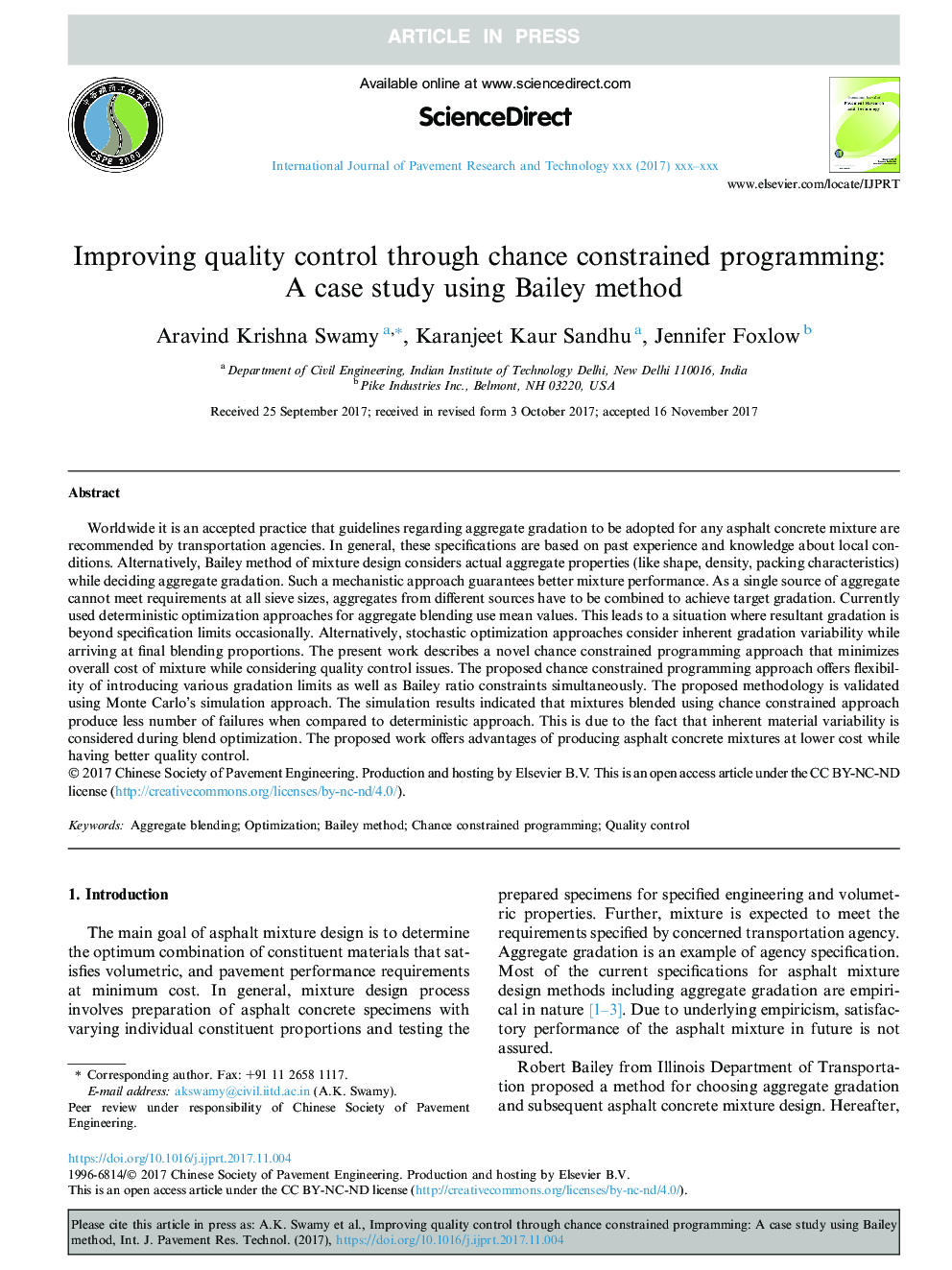| Article ID | Journal | Published Year | Pages | File Type |
|---|---|---|---|---|
| 6747921 | International Journal of Pavement Research and Technology | 2018 | 10 Pages |
Abstract
Worldwide it is an accepted practice that guidelines regarding aggregate gradation to be adopted for any asphalt concrete mixture are recommended by transportation agencies. In general, these specifications are based on past experience and knowledge about local conditions. Alternatively, Bailey method of mixture design considers actual aggregate properties (like shape, density, packing characteristics) while deciding aggregate gradation. Such a mechanistic approach guarantees better mixture performance. As a single source of aggregate cannot meet requirements at all sieve sizes, aggregates from different sources have to be combined to achieve target gradation. Currently used deterministic optimization approaches for aggregate blending use mean values. This leads to a situation where resultant gradation is beyond specification limits occasionally. Alternatively, stochastic optimization approaches consider inherent gradation variability while arriving at final blending proportions. The present work describes a novel chance constrained programming approach that minimizes overall cost of mixture while considering quality control issues. The proposed chance constrained programming approach offers flexibility of introducing various gradation limits as well as Bailey ratio constraints simultaneously. The proposed methodology is validated using Monte Carlo's simulation approach. The simulation results indicated that mixtures blended using chance constrained approach produce less number of failures when compared to deterministic approach. This is due to the fact that inherent material variability is considered during blend optimization. The proposed work offers advantages of producing asphalt concrete mixtures at lower cost while having better quality control.
Related Topics
Physical Sciences and Engineering
Engineering
Civil and Structural Engineering
Authors
Aravind Krishna Swamy, Karanjeet Kaur Sandhu, Jennifer Foxlow,
